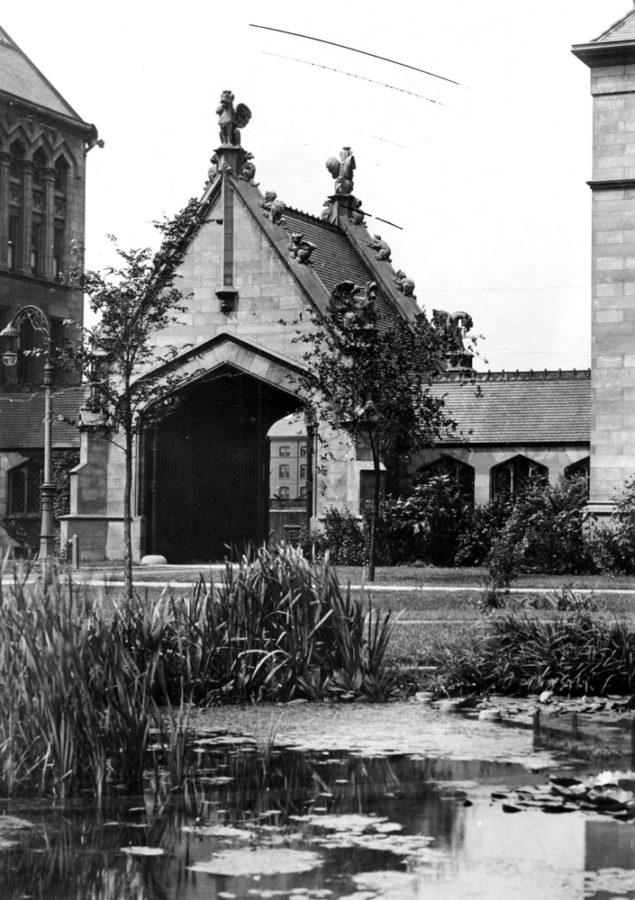Everyone had a story to tell. Garbage truck drivers stopped and rolled down their windows. Waiting for the bus, a woman talked about losing her job and the rising cost of living in the city. Neighbors driving by would stop and ask whom we were working for, then tell us how their houses had been flooded, too, and how they were living out of state now. On the way to the airport, our taxi driver complained about people who came to New Orleans and saw only what hadn’t been touched by the hurricane, believed the city was doing fine, went home, and forgot about it.
During spring break, I traveled to New Orleans with friends from the University of Chicago to volunteer for an organization called Common Ground. It was naïve, but I too expected to see a city mostly rebuilt, with little evidence of damage after the hurricane hit. As soon as we left the French Quarter, it became clear that Katrina was far from over. We saw houses marked with the letters “TFW,” a date, and a number. As I found out later, “TFW” stands for “toxic floodwater.” It was spray-painted on virtually every house we saw in the Ninth Ward, one of the hardest-hit neighborhoods.
The “TFW” marked on the houses was not the most sobering reminder of the hurricane’s lasting effect. That was the number written beneath the date on every single house, often a zero, but not always. It was the number of bodies found, and the date the house was searched. Every house stared us in the face with a reminder of the hurricane’s human toll.
The Ninth Ward was eerie in its silence. In the Lower Ninth, where the devastation was greatest, the pre-Katrina population was 98 percent black. Thirty-six percent of the inhabitants lived below the poverty line, and the homicide rate was 10 times the rate of New York City and twice that of New Orleans. Now the houses were empty. The murder rate is near zero, but that has been replaced by a sky-rocketing suicide rate.
Among endless blocks of desolate houses, the volunteers stuck out. We were mostly white college students, with a high frequency of dreadlocks and guitars among us. This was clearly a neighborhood few of us would have wandered around in freely before the storm sent everyone away. What did it mean that it took the exodus of the residents to bring us there? It was as if a second Chicago Fire leveled the South Side past Midway and Cottage Grove, and University of Chicago students flooded in for the first time.
Before I went to New Orleans, friends who had seen and heard about the looting on television warned me to be careful. Walking around in a deserted neighborhood was unsettling. It was unsettling, however, not because I was afraid someone would jump out at me, but because I wanted to see someone else there, someone to say hello to or to talk with. The people we met weren’t murderers or looters. They wanted to come home, and they wanted to talk about what they had experienced.
In the routine labor of “gutting” a house, I would forget that we were working on someone’s home. Then as I carried a heavy, reeking mass of belongings into the street, a photograph or a kindergarten diploma would flutter out of the pile. I was reminded that it wasn’t simply homes and material possessions that were lost, but an entire community. Only one of the hundred public schools in New Orleans is still open, and families have scattered. Mrs. Dumas, whose house we worked on first, pointed across the street. “My son lived there. My daughters lived there, and there. My grandson lived over there.”
On the first day, we saw the same empty bus drive down the same empty street three or four times as we worked. Once, the driver pulled to a halt in front of me as I was taking a break. He opened the door and said, “Have you ever seen anything like this?” “No,” I answered. It was exactly what I was feeling.
I had never seen anything like the sense of community I felt working in New Orleans. Everybody was in it together. I was afraid that the homeowners we met from the Ninth Ward would resent us wealthy college students coming down to help out for a few days, but everyone was grateful. Now that I’m back in Chicago, I have to remember that there are lots of neighborhoods like the Ninth Ward here. There was no hurricane to draw attention to them, but they’re still there. There are probably women like Mrs. Dumas, and perhaps they have a story to tell.







